
Do you have a question about the Roland CAMM-1 and is the answer not in the manual?
Statement regarding FCC compliance for Class A digital devices and potential radio frequency interference.
Statement confirming the digital apparatus meets Canadian interference-causing equipment regulations.
Guidance on proper grounding procedures for electrical safety and preventing interference.
Essential safety guidelines for operating power tools in a safe and efficient manner.
Explanation of warning and caution labels used to alert users to potential risks of injury or damage.
Interpretation of common safety symbols indicating danger, prohibition, and mandatory actions.
Description of labels affixed to the product body and their specific meanings.
List of all items included with the unit to ensure a complete package.
Identification and description of the main components visible on the front of the unit.
Identification and description of the main components visible on the rear of the unit.
Detailed explanation of the buttons, LEDs, and controls on the operation panel.
Instructions for connecting the unit and setting up the workspace for operation.
Configuration options for serial communication and material handling using DIP switches.
Step-by-step guide for safely installing the cutting blade into the blade holder.
Procedure for powering on the unit and checking the power indicator status.
Detailed instructions for correctly loading various types of material into the unit.
Specific steps for loading material when performing extended cutting operations.
How to define the starting point for cutting operations on the material.
Method for performing a test cut to ensure optimal blade force and quality.
Guidance on adjusting blade force and cutter extension for satisfactory cutting results.
Process for sending cutting data from a computer to the unit.
Instructions on how to pause, resume, or terminate an ongoing cutting operation.
Steps for applying the finished cut material to a surface.
Procedures to follow after a cutting job is finished, including blade removal and cleaning.
Step-by-step guide to run the unit's self-test function for performance verification.
How to use the rotate function to optimize material usage and cut along the vertical dimension.
Instructions for using plotter pens to create designs on paper media before cutting.
Methods to repeat a previous cutting operation using stored data.
Information on different blades, cutting conditions, and expected blade life.
Solutions for common problems when the unit fails to operate or run correctly.
Troubleshooting steps for material slipping, improper cutting, or indicator errors.
Chart detailing instruction compatibility for CAMM-GL III modes and device control.
Information regarding the automatic backspace feature available for character input.
Comprehensive technical details including mechanism, cutting area, speed, and power.
Details on parallel and serial interface standards, connectors, and transmission methods.
Legal terms and conditions governing the use of the included software.
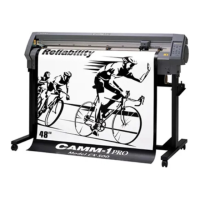
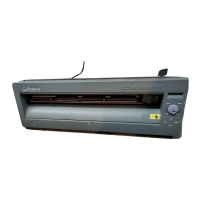
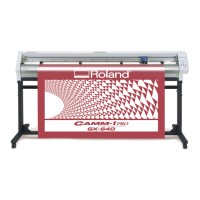


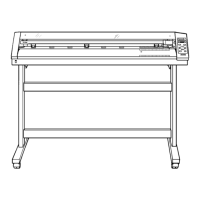


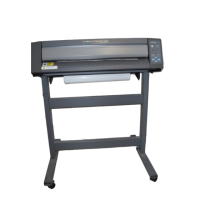



